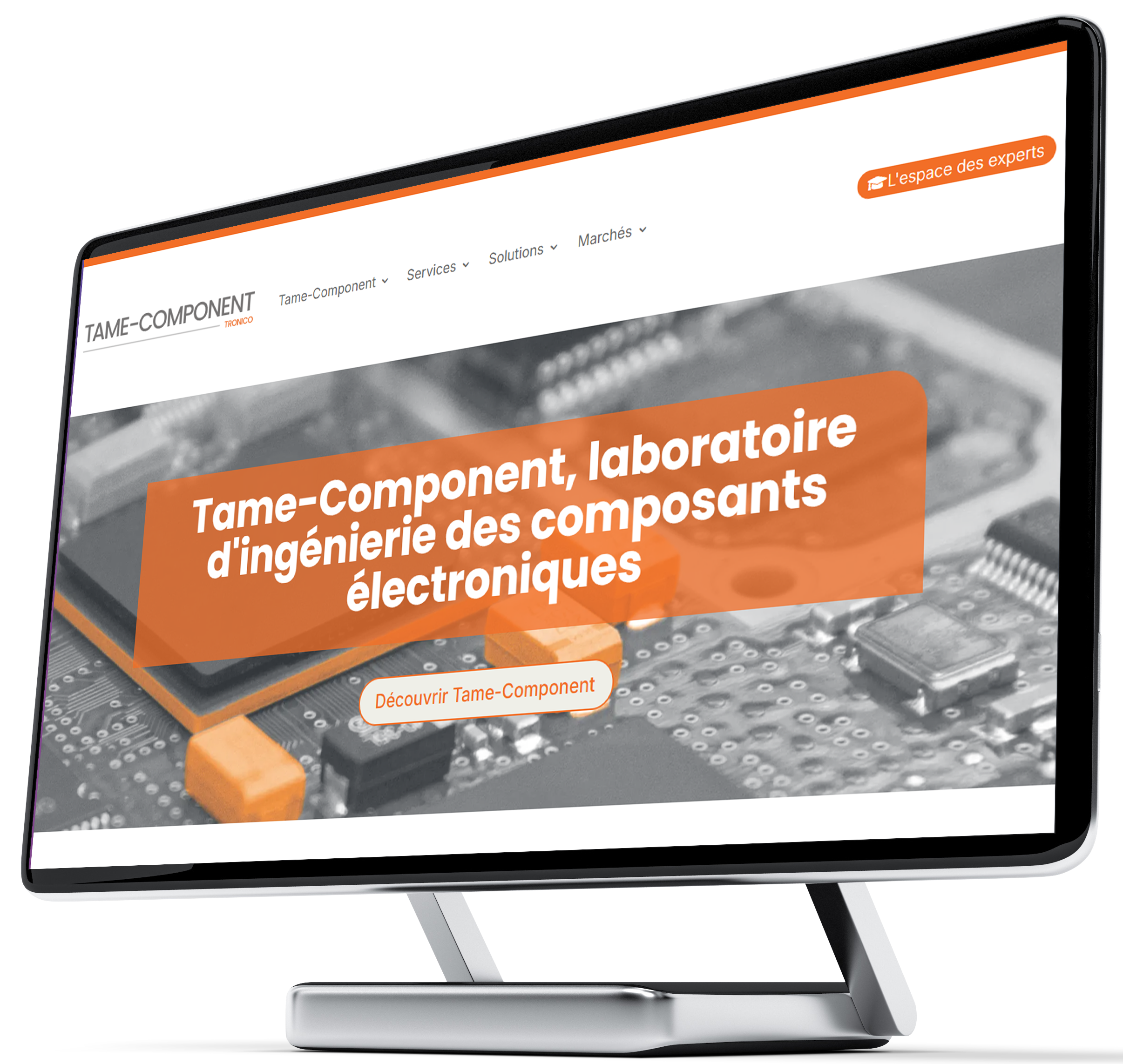The power of an industrial group
Sustaining Longevity
Mastering Obsolescence
Through the Tame-Component laboratory, Tame-Care ensures the longevity of your medical devices while effectively managing obsolescence risks.
The risk of obsolescence is highly prevalent in the medical market. The lifecycle of electronic components has significantly shortened, now spanning 3 to 5 years, while the lifecycle of systems tends to extend over several decades.
Obsolescence represents a major risk with significant potential costs:
- Production stoppages due to supply chain disruptions caused by component obsolescence
- Changes in technological characteristics leading to malfunctions
- Increased costs and delays for end-of-life components
- Additional costs resulting from these challenges.
Our Support
Obsolescence Management
With product lifecycles becoming increasingly shorter, thousands of components become obsolete every year.
Component monitoring is essential to:
- Anticipate future bottlenecks
- Secure component availability
- Minimize costs associated with these events by addressing them proactively
- Obtain reliable long-term projections.
Through the Tame-Component laboratory, we possess significant expertise in all aspects of obsolescence management. We have developed a lifecycle monitoring and alert management system (for obsolescence, RoHS compliance, etc.).
With early warning processes in place to identify “at-risk” components, we can analyze obsolescence risks across your entire range of medical devices.
Secure Storage
Coupled with obsolescence monitoring, secure storage ensures the availability of your critical and standard components safely and in alignment with the targeted longevity of your medical devices. Tame-Care, through Tame-Component, offers various storage solutions tailored to product and component requirements, particularly regarding expected durations. Full traceability of these operations is guaranteed.
Sourcing and Qualification of Alternative Sources
Thanks to our network of strategic suppliers, our Procurement team – in collaboration with the R&D department – identifies similar components to maintain performance while controlling costs associated with modifying mass production processes and testing.
Counterfeit Detection
In cases of shortages or component obsolescence, medical device manufacturers may be forced to source from brokers. However, components from alternative sources pose risks of counterfeiting, which can lead to product failures, safety issues, and significant financial losses.
Tame-Component, our in-house laboratory, conducts tests accredited by COFRAC ISO 17025 (*) to detect potential counterfeit components (using procedures such as AS6171).
The laboratory provides top-notch incoming inspections, including X-rays, microscopes, electrical comparators, and chemical marking permanence analyses.
These analyses prevent counterfeit components from entering your medical devices while mitigating shortages.
Component Recovery from Boards
In cases of obsolescence, recovering electronic components from a circuit board may be useful.
This service can be implemented to reuse functional components, reduce costs, or carry out repairs.
Redesigning Circuit Boards
If no equivalent component meets requirements, Tame-Care can offer a redesign of your device in a short timeframe, thanks to the preservation of your design documentation.
Other laboratory services are available to sustain your electronics, such as upscreening or component re-tinning (RoHS compliance) upon request.
Key Challenges
Safety and Regulatory Compliance
Medical devices must meet strict safety and regulatory compliance standards.
Using obsolete electronic components may jeopardize patient health if the components fail to function properly.
Furthermore, manufacturers must adhere to international standards, such as the MDR in Europe or the FDA in the United States, requiring rigorous documentation and full traceability of the components used.
Obsolescence can complicate certification or result in penalties for non-compliance.
Prolonged Lifespan of Medical Devices
Medical devices are designed to operate over extended periods, often ranging from 10 to 20 years, while the lifespan of electronic components is significantly shorter, typically 3 to 5 years.
This disparity between product lifecycle and component lifespan presents a major challenge, necessitating proactive planning to ensure the availability of parts throughout the entire lifespan of the devices.
Industrial Risks and Associated Costs
The obsolescence of electronic components can lead to several industrial risks, such as production stoppages due to a lack of available parts or increased costs from urgent purchases of remaining stock.
Additionally, if a critical component becomes unavailable, product redesign is often necessary, which can be both expensive and time-consuming.
These challenges are further compounded by the costs associated with recertifying the device after modifications.
Supply Chain and Component Quality
The globalization of supply chains makes manufacturers reliant on often distant suppliers, who may discontinue the production of essential components without notice.
Moreover, in cases of obsolescence, reliance on parallel markets increases the risk of acquiring counterfeit components, thereby compromising the reliability of medical devices.
Overall Cost of Obsolescence
In cases of obsolescence, recovering electronic components from a circuit board may be useful.
This service can be implemented to reuse functional components, reduce costs, or carry out repairs.
Contact
Offers tailored to the different stages of your project
High value-added services
Tame-Component
Founded in 2000, Tame-Component is a laboratory specialized in testing, quality control, analysis, and qualification of electronic components, dedicated to the reliability and durability of high-tech products: complex electronic boards and assemblies.
Combining technological expertise and electronics knowledge, Tame-Component designs and offers consulting services and testing solutions for the aerospace, defense, space, medical, sustainable mobility, and energy sectors.


















